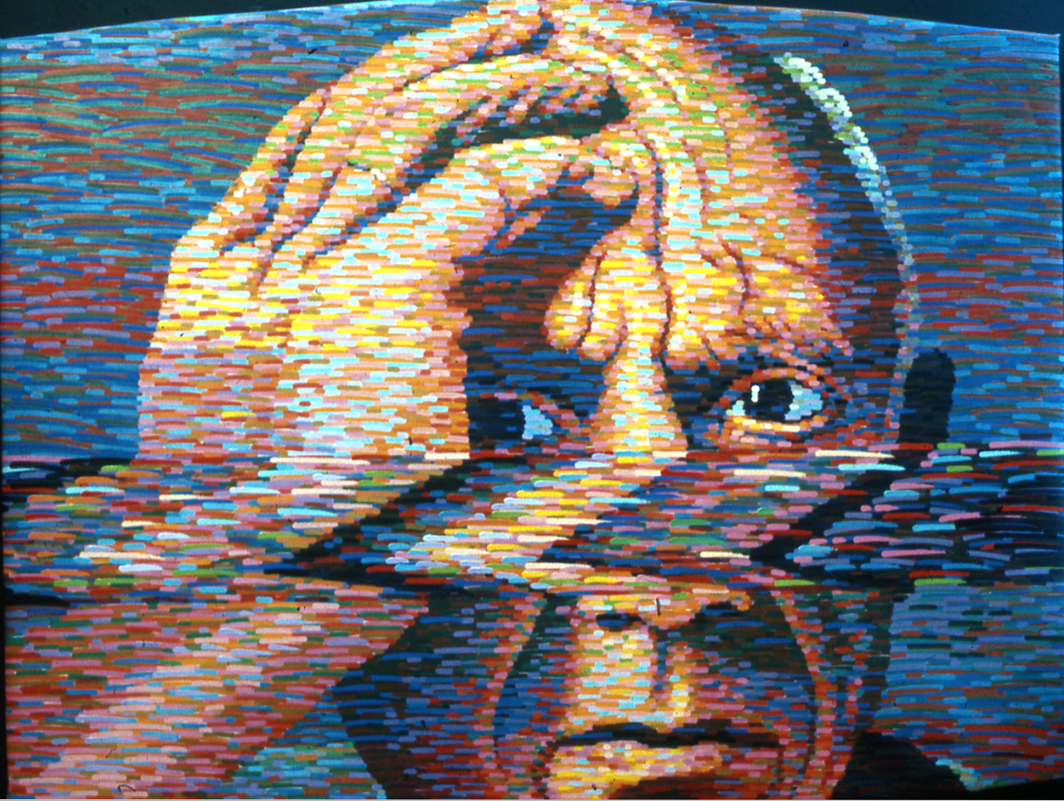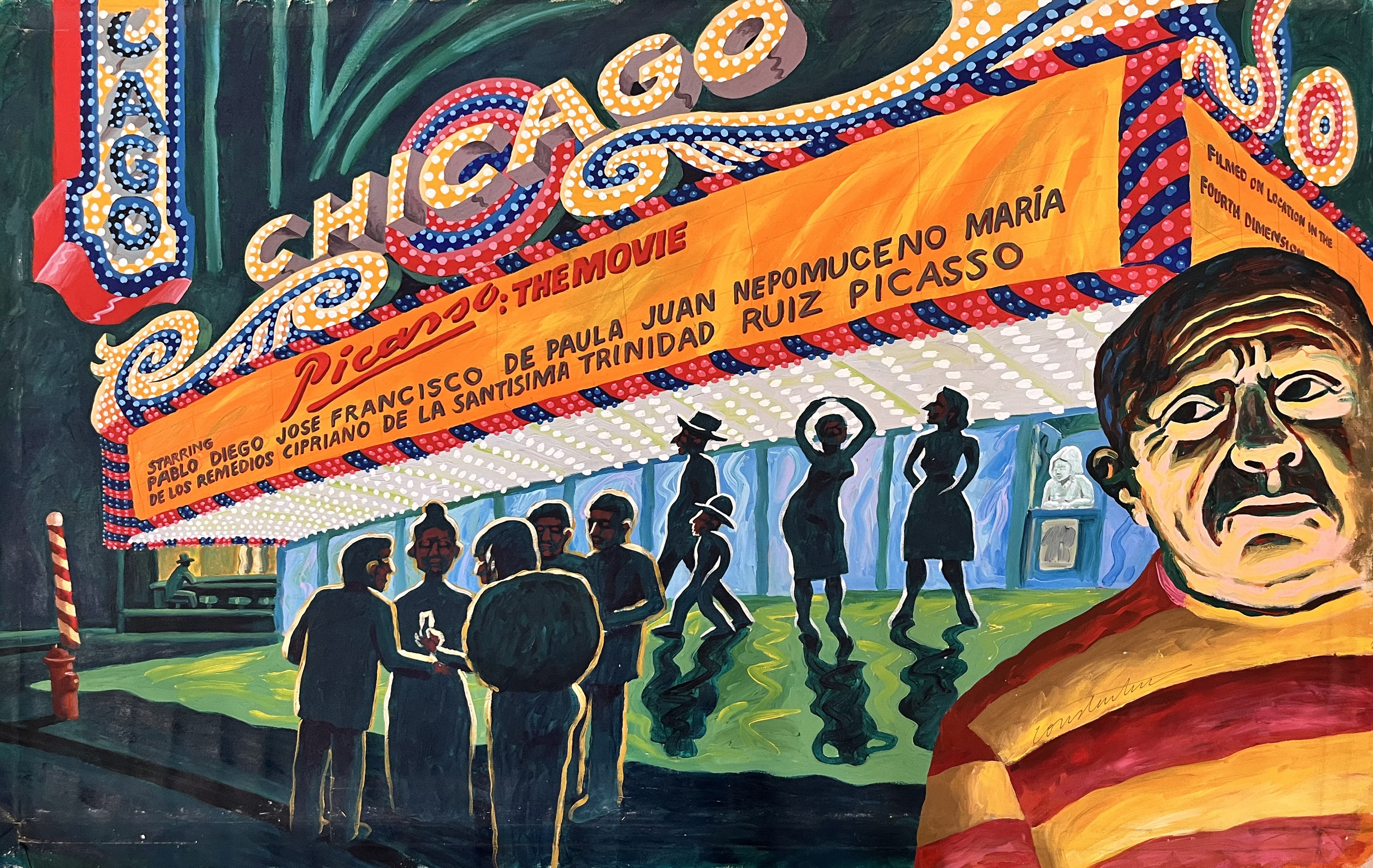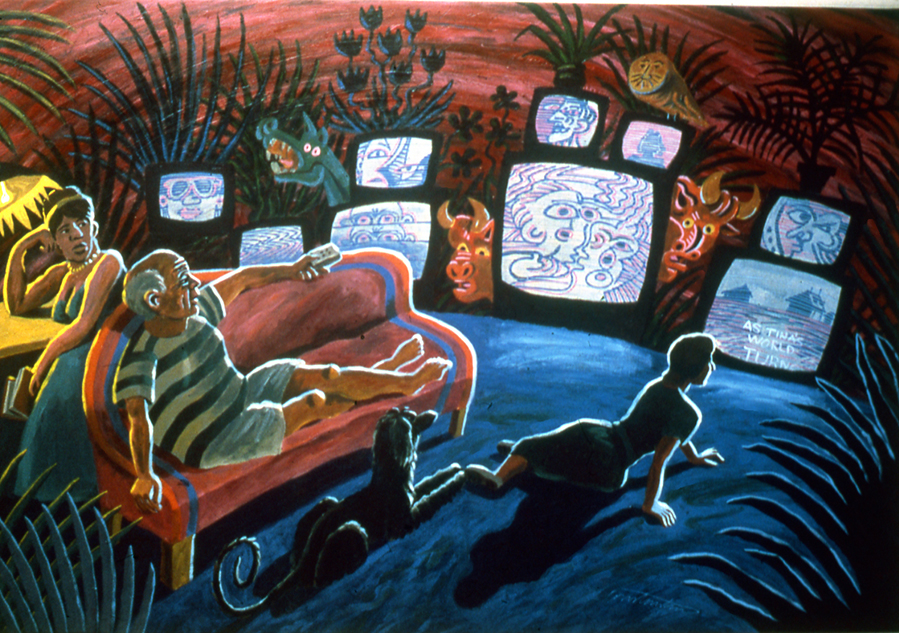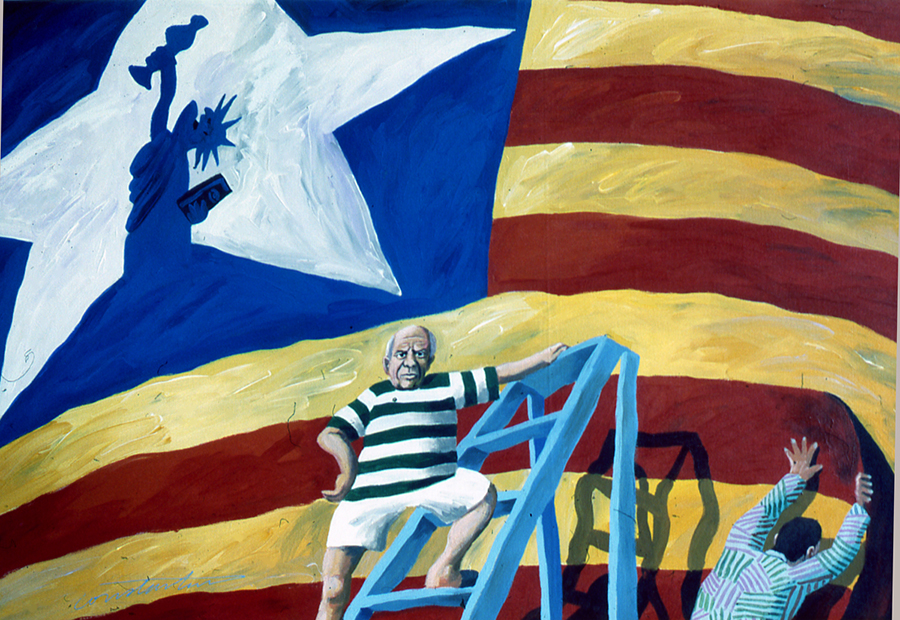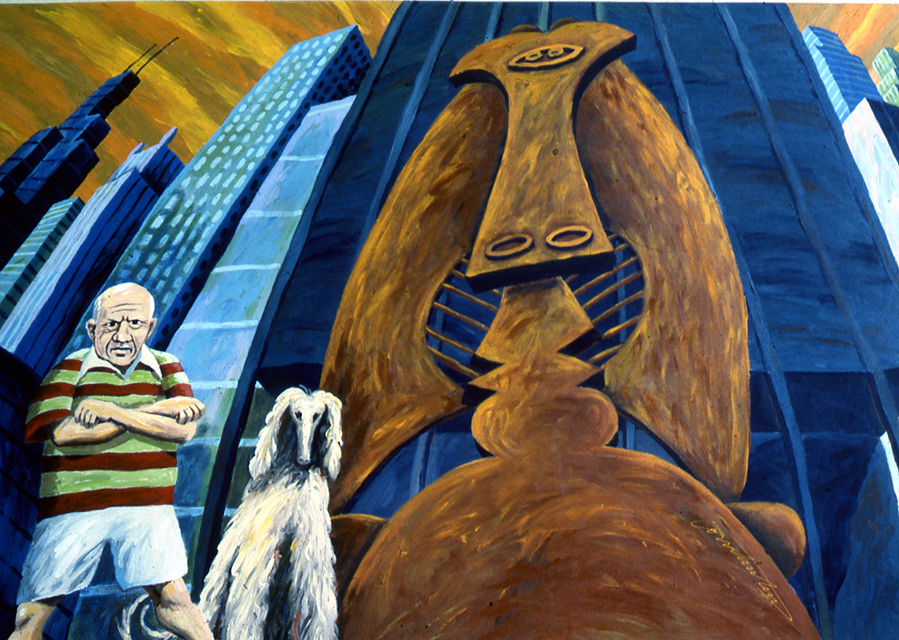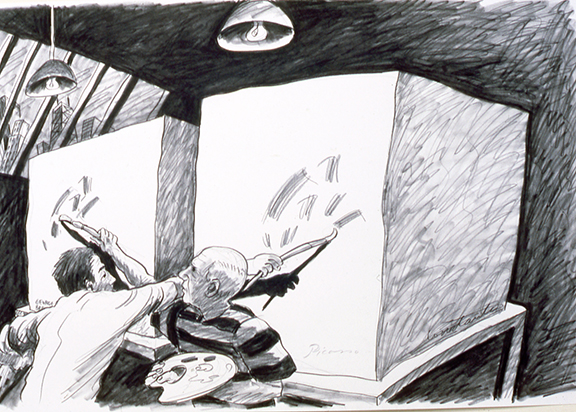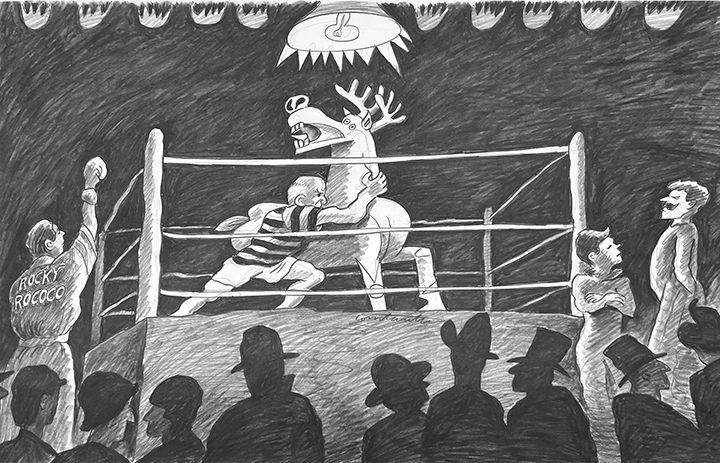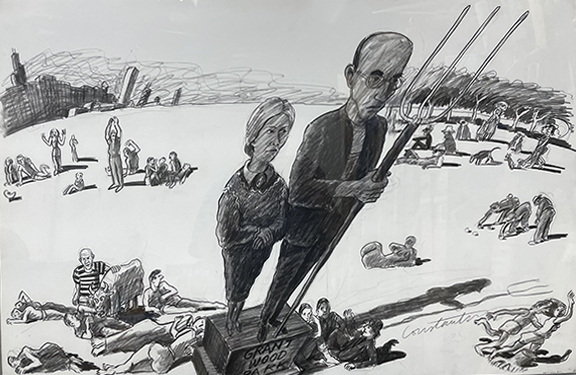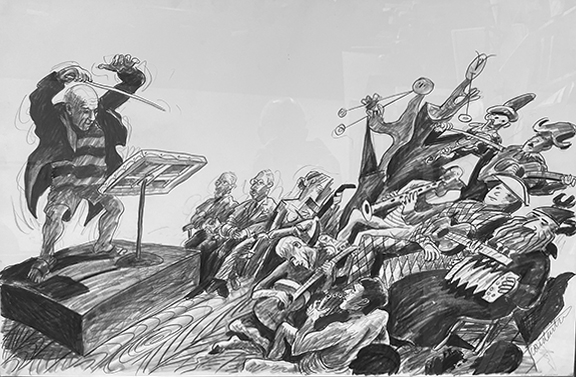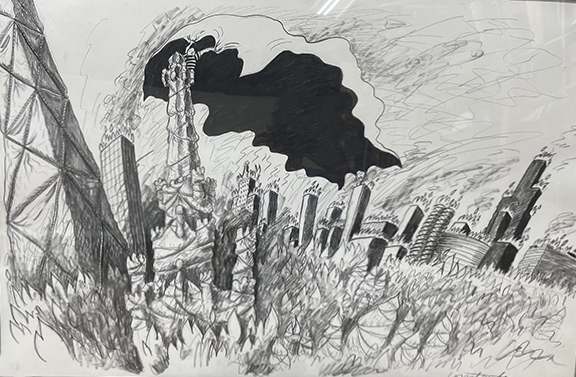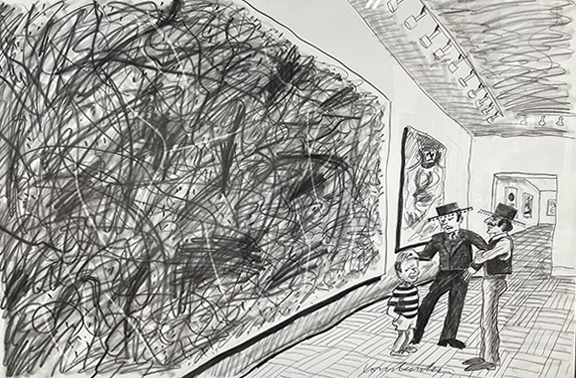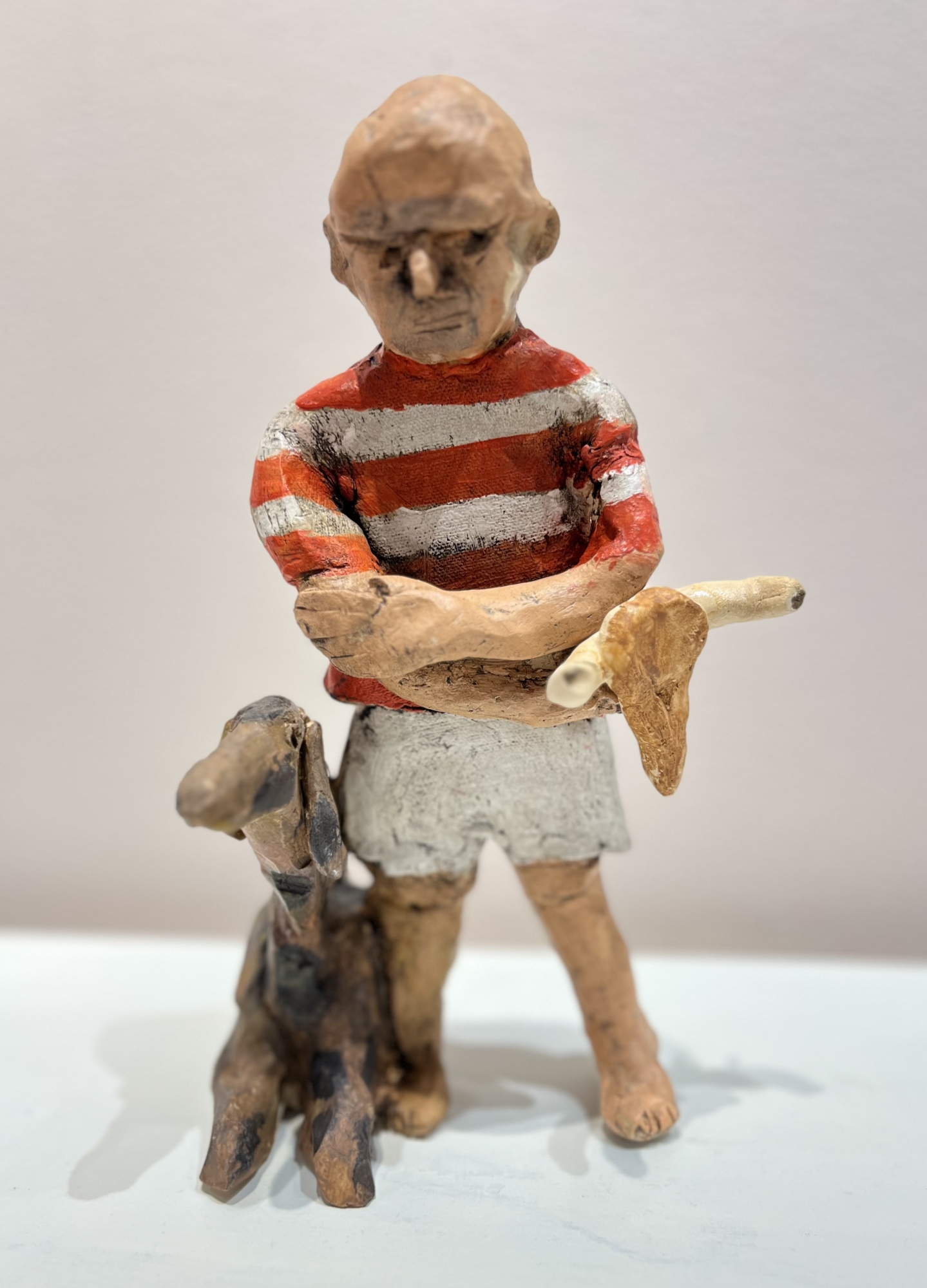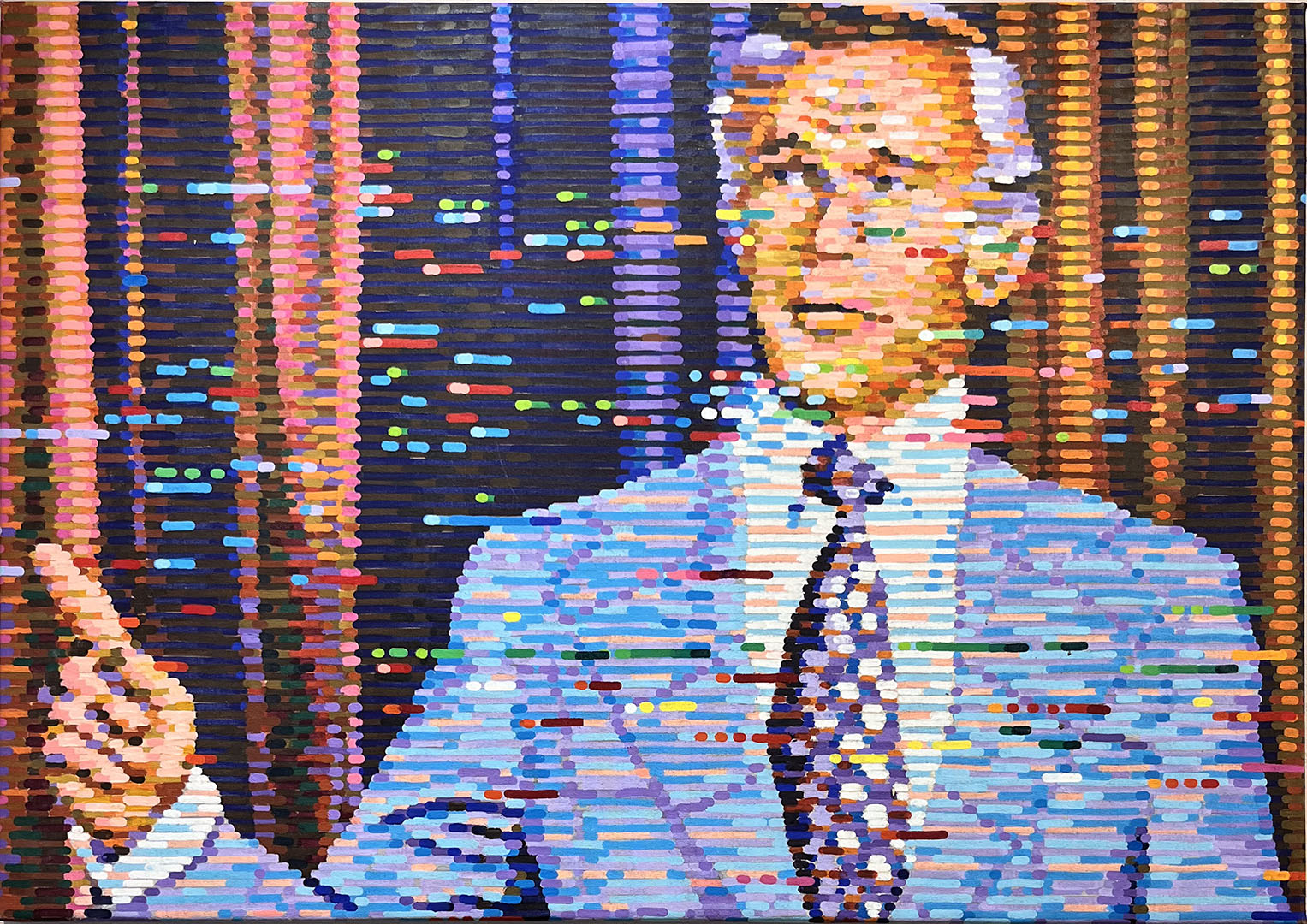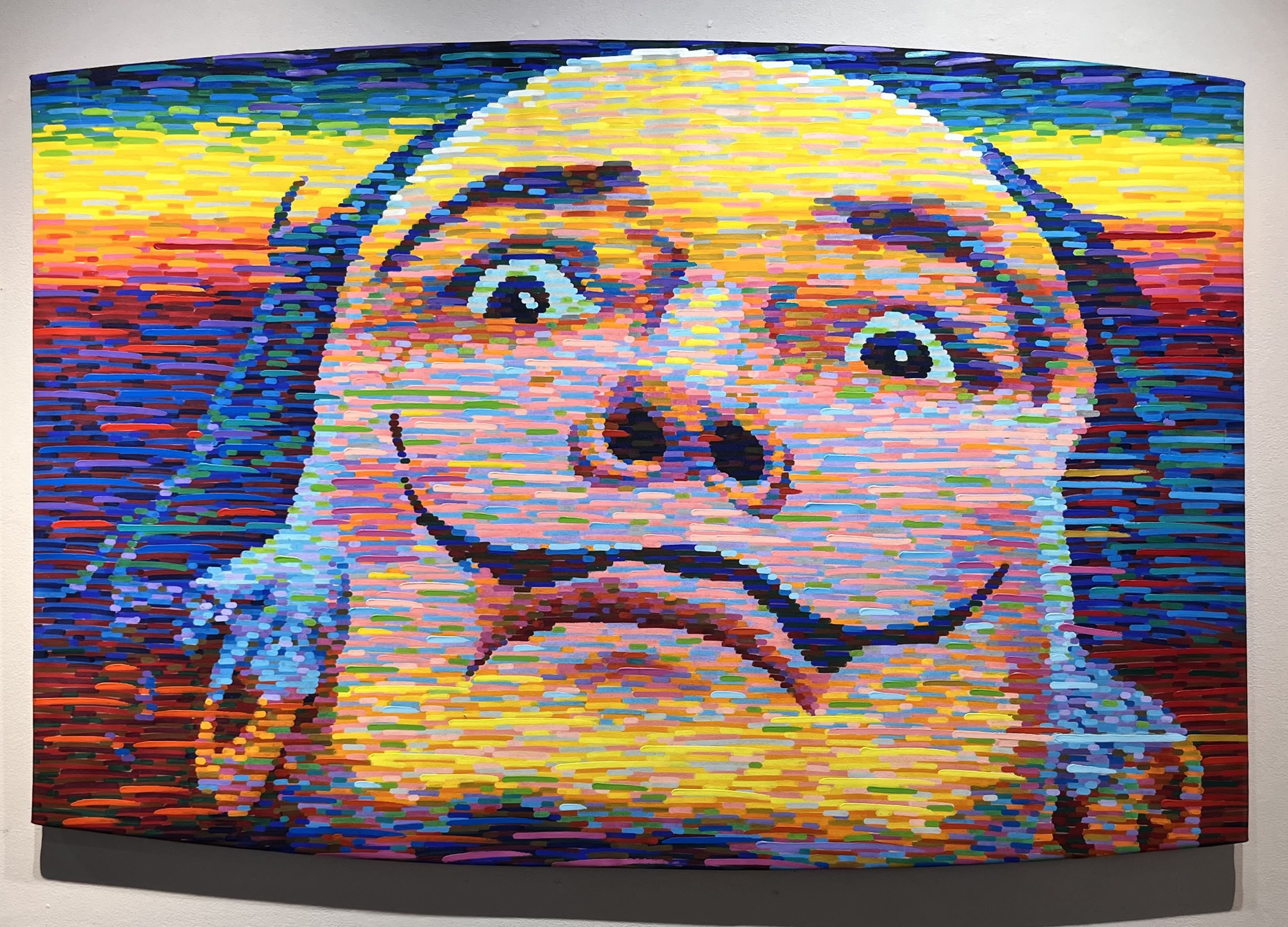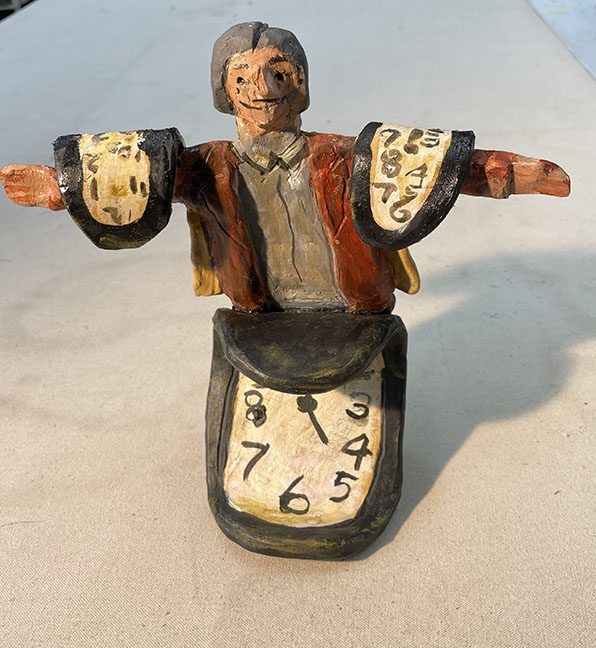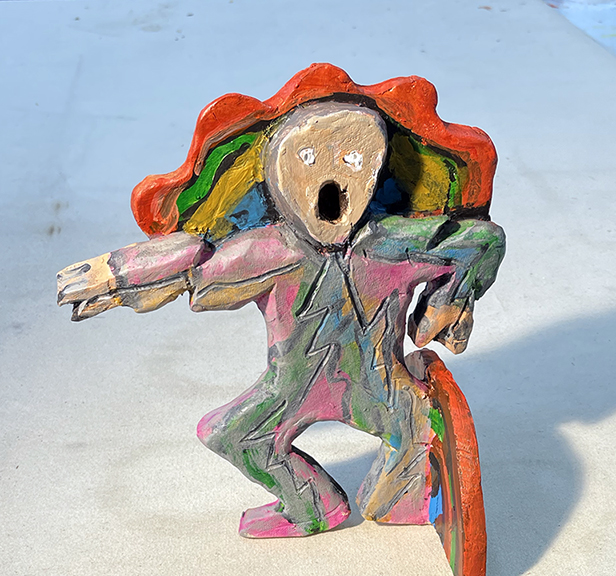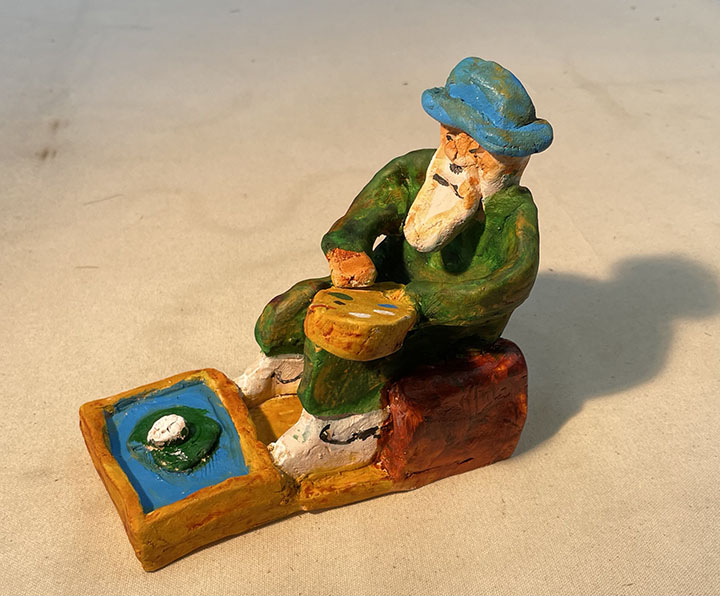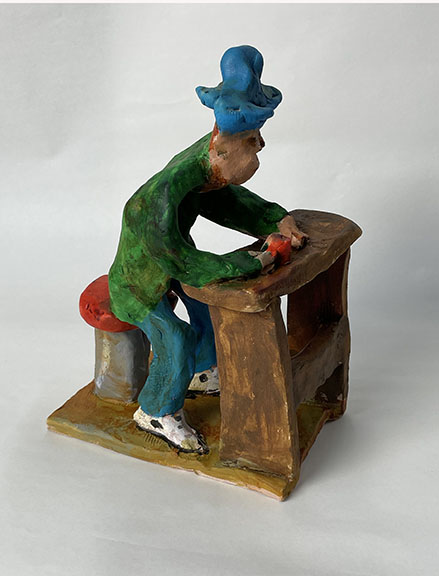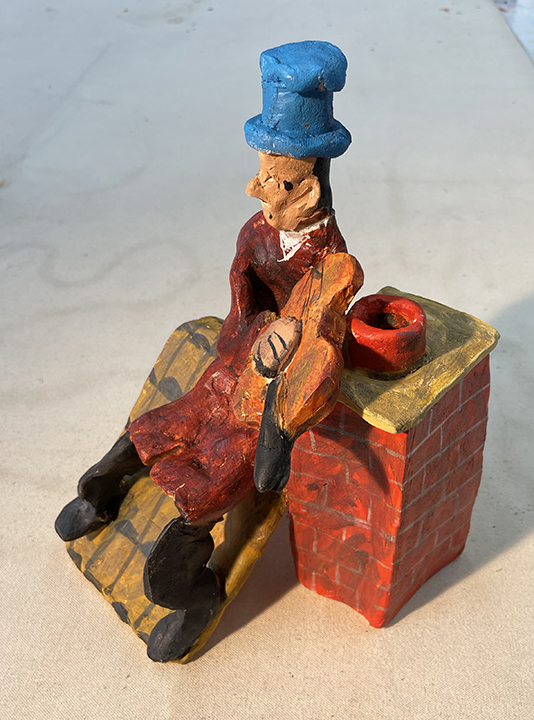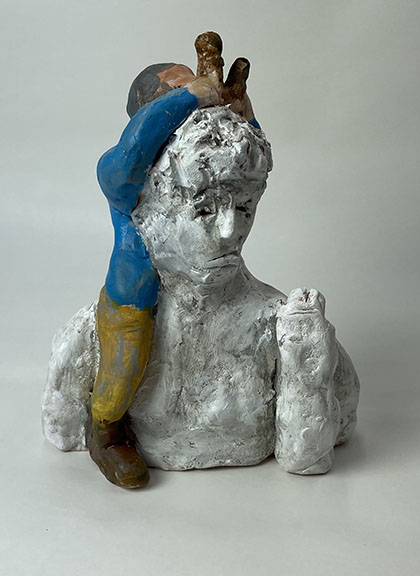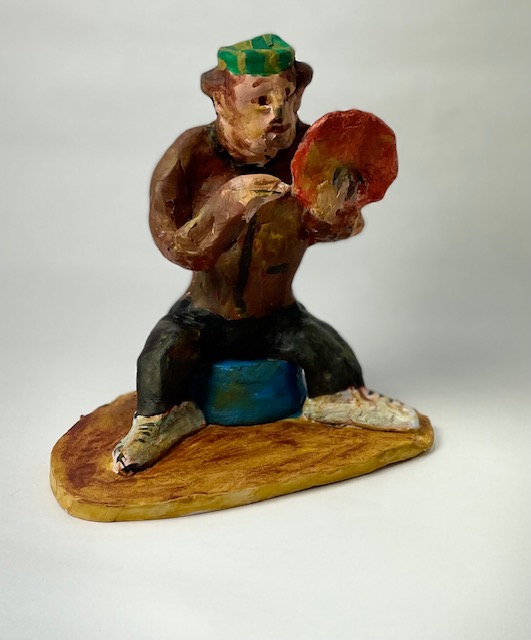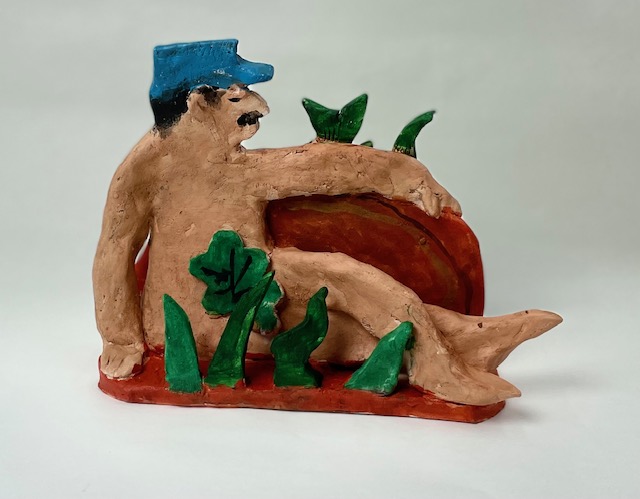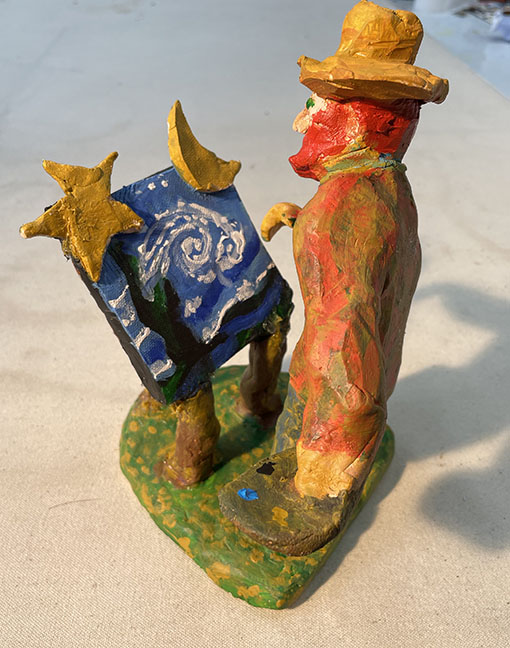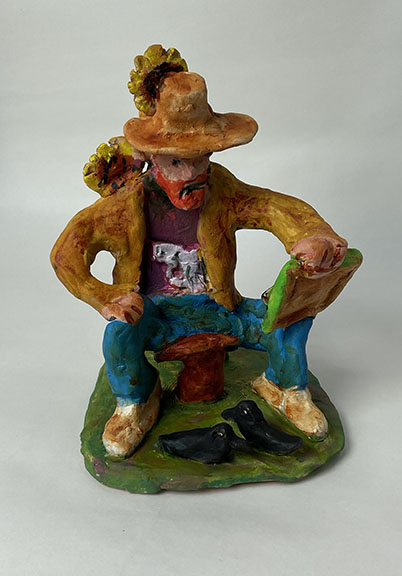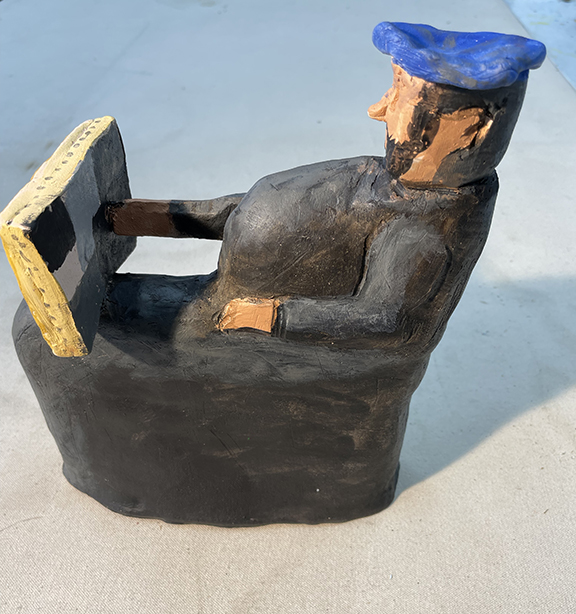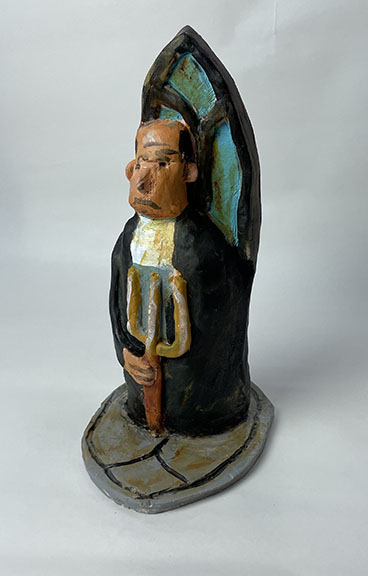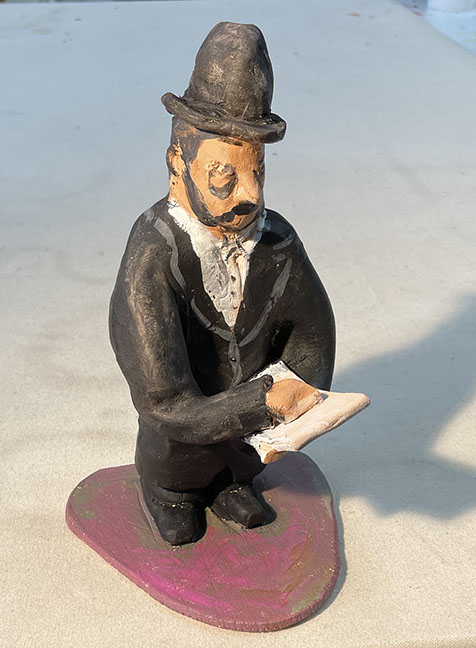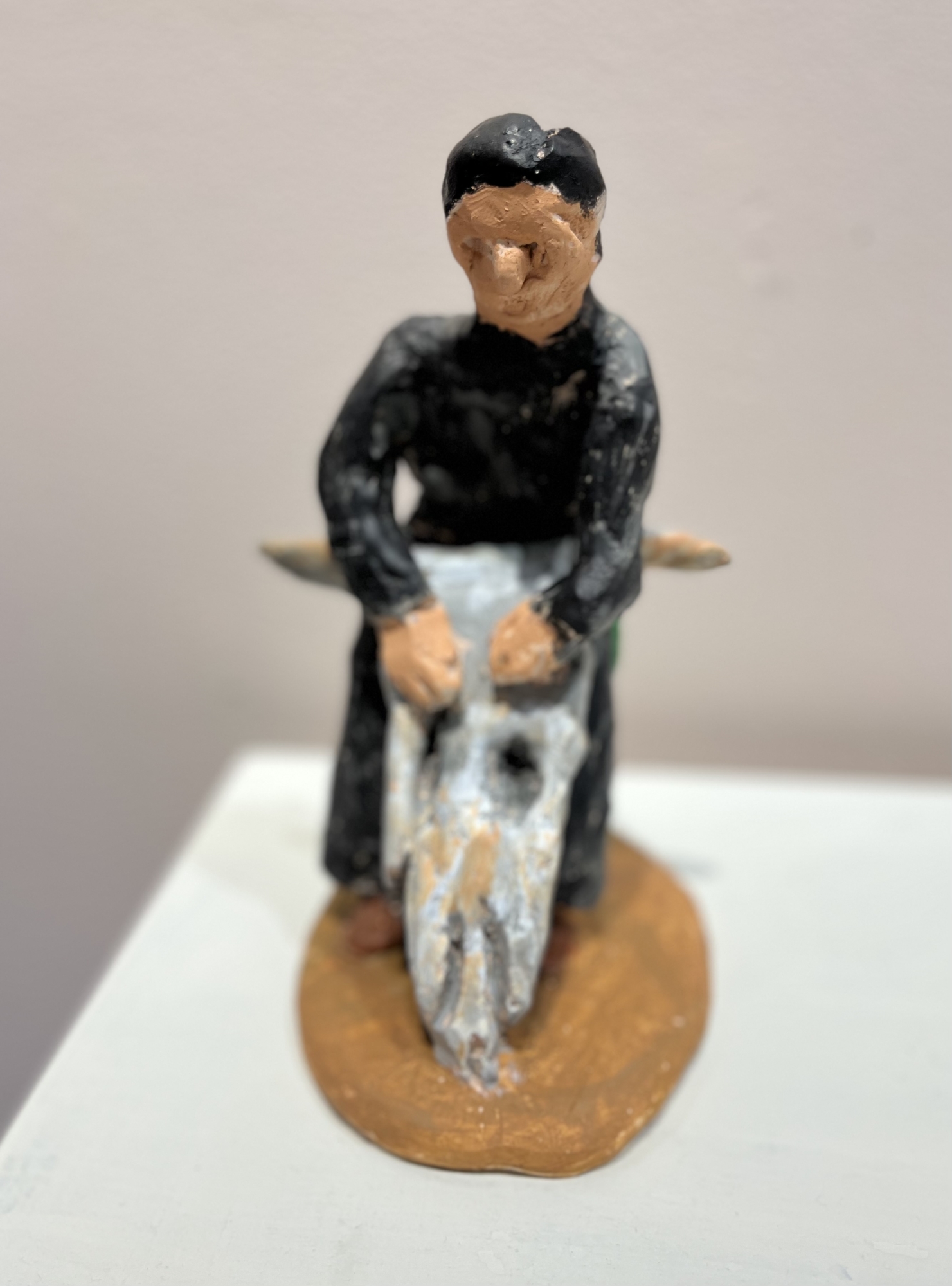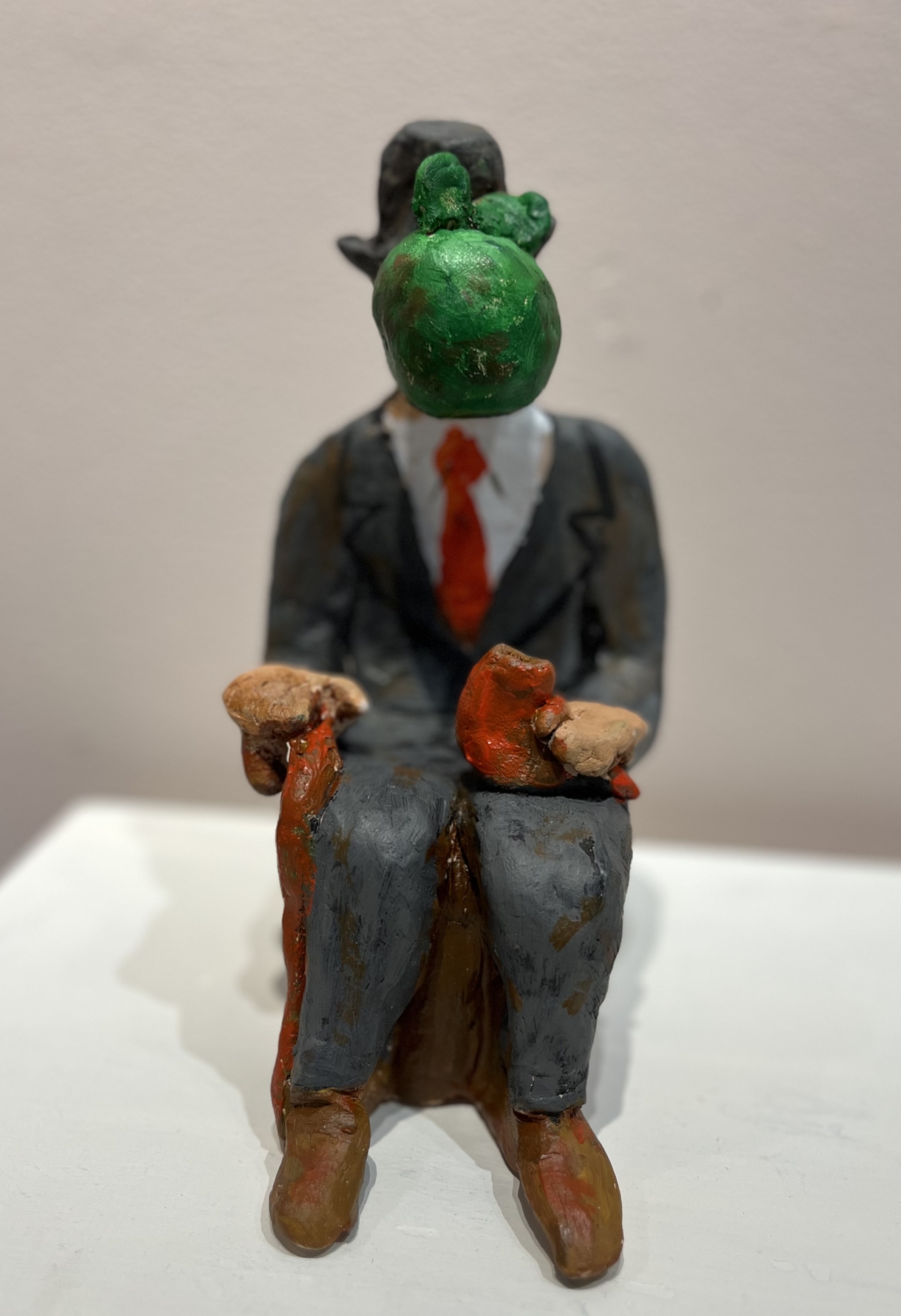Greg Constantine
GREG CONSTANTINE
“I have taught painting, drawing, and art history at Andrews University for forty-three years while conducting sixteen art history summer sessions for students in Europe. As my exhibition record reveals, I began exhibiting nationally in 1969, and since 1975, numerous one man shows including seventeen in New York City that have dealt with Art about Art. It is very possible that my involvement in the teaching of art history and the intensification of artists dealing with other artists’ work have resulted in this similar theme recurring in my own art. The focus of my professional career has clearly been the exhibiting of my art in New York City, and as a result, a moderate reputation has developed.
From 1972 to 1978, my painting involved squeezing paint tubes in horizontal lines directly on the canvas to create large television images. The rendering of famous artworks through this horizontal matrix gives a curious effect to the appropriate art works such as “La Grande Jatte” and “Les Demoiselles d’Avignon” when distorted by the corresponding T.V. aberration. This same tube squeezing was used for the Jackson Pollock works and the American Landmarks that followed in 1978 and 1979, except that the marks are curvilinear and random.
In 1980-81, my effort was totally given over to creating authentic-looking license plates which appeared as if the artists had had the opportunity to design their own personalized plate, visual signature and all. For example, these “Artist Licenses” are all white for George Segal, all black for Louise Nevelson, wrapped for Christo, splattered for Pollock, smashed for John Chamberlain and melted for Dali.
From 1982 to 1986 my work dealt with drawings of famous artists coming to well-known American cities. Exhibited in New York, Los Angeles, Frankfurt, and Chicago the drawings were published by Alfred A. Knopf and Chicago Review Books as Vincent van Gogh Visits New York 1983, Leonardo Visits Los Angeles 1985, and Picasso Visits Chicago 1986. The drawings are rife with references to contemporary art and culture, art history, and the life of the artists themselves. Considerable documentation of the references in the end matter of each book makes them curiously educational.
Beginning in 1983, I worked concurrently on a series of constructed paintings I call “slices of art”; wedges of famous paintings that include the frame. The “greatest hits” series are works made up of an accumulation of slices of well-known paintings by a particular artist juxtaposed together in a rectangular composition. The “inside-out” paintings feature the frame more than the previous work to the extent that the image area attracts the eye less than the frame does.
In some works, there is an attempt to confuse the distinction of the frame from the canvas area. A subsequent series deals with famous artists’ self portraits which become curiously schizophrenic when sliced.
The next generation of work involved the combining of two split portraits (and their respective frames) resulting in a strange yet curious new personage which unmistakably still refers to the artist’s self portrait and the female model. Following, the next series of works deals with half of a face from a familiar artwork, (e.g. Botticelli’s Venus), juxtaposed with the corresponding opposite half of a very different face taken from art history, (Picasso’s Demoiselle). While the distinction between the two halves is obvious due to the impossibility of perfect alignment or colouration, the viewer’s brain, and not the eye, resolves these differences. Despite the irony of the combined image, the resultant face maintains the attributes and even the identity of each of the component halves, hence the title, “Messing With the Corpus Callosum. “With a variation on the theme, I continued to combine two faces; half of famous artist’s self portrait along with the actor who portrayed him in a motion picture; e.g. Vincent van Gogh with Kirk Douglas, Paul Gauguin with Anthony Quinn, Rembrandt with Charles Laughton, and Picasso with Anthony Hopkins. More recently, my works are images half of a Vincent van Gogh self portrait combined with a black and white painting of half of a photograph of Van Gogh.
The architectural series of paintings and drawings recall the works done for my books in 1983-1986. Well-known artworks are integrated or juxtaposed with a famous building, e.g. Gehry’s Guggenheim museum in Bilbao seems to be reflected in the water, but the reflection is actually a distorted “Guernica” by Picasso. In 2000 I focused on sections of stylized hair from Renaissance paintings which were abstracted and greatly enlarged into what I call “Hairscapes”. Following that was a logical extension of my concept of face combines which still feature elaborate hair.
Next I worked on a series of profiled faces taken from the history of art presented as trios on each canvas. Then I am worked on a series of eroded images of faces taken from art history contained within a profile of the artist who created them.
The “tilted images” (2005-6) are an attempt to violate the traditional picture plane by distorting well knownmasterpieces so they seem to recede back into the illusionistic picture space behind the imaginary ‘glass wall’ situated at the frame.
The “Anamorphic Images” (2006-8) are an extension of the tilted images, with the subject being stretched so drastically that they can also be observed obliquely as anamorphs. That is, the original masterwork will be ‘re-constituted’ when the observer looks at the image from an extreme angle almost parallel to the canvas.
The three 2009-10 books, “When Big Artists Were Little Kids”, “When MORE Big Artists Were Little Kids”, and “When Big Architects Were Little Kids” are inspired by my own beginnings as an artist. These books are for middle readers (ages 7-12) each depicting 17 famous artists or architects, from Leonardo to Warhol, as little kids. Using a combination of the artists’ real biographical facts and my own imagination to tell the stories. On the left side of the spread, the book reveals an incident from the artist’s childhood, and on the facing page it shows how that may have influenced their adult work. It helps to be somewhat informed about what the artist ultimately achieved, and if not, one will learn even if one doesn’t realize it.
In 2009-10, I created 21 large non-objective abstract paintings on canvas after having explored several design and concept options through preliminary sketches on paper. These works have no recognizable naturalistic subject matter, although a subliminal theme may emerge in the observer’s mind when contemplated.
I received several modest faculty research grants which assisted in travel and materials required to work in studio and exhibit my work in New York, Chicago and Europe. In 1986 I was the recipient of a Michigan Creative Artists Grant ($8000). In 1984 I was awarded the J.N. Andrews Medallion by Andrews University for outstanding research and publication. In 1996 I was given the title of Artist-in-residence and Research Professor of Art. I retired in 2005 but continue to create art and exhibit my work.
The “Poetic Licenses” is an artistic extension of the more than 150 “Artist Licenses” works I created and exhibited in New York, Chicago, Long Beach, Miami and Paris in 1981 and subsequent years. The term Poetic Licenses is a play on words, and most viewers, when confronted by these groupings, will at first see a random juxtaposition of weathered automobile plates from various countries and states. They recall the phenomenon of the ubiquitous so-called “vanity” plates, with the exception that these have been joined together to form full statements that are quotes by and about artists. For example, Picasso’s “Poetic License” states, “WHEN I HAVEN’T ANY BLUE, I USE RED,” and Warhol’s says, “IN THE FUTURE EVERYBODY WILL BE FAMOUS FOR 15 MINUTES.” While at first glance, it may appear I have simply collected old, rusted license plates to create this text art, I actually fabricated, painted and rusticated the pieces myself. Each plate is rendered as a convincing trompe-l’oeil entity.
This new work, “Poetic Licenses,” “Car Quotes” and “Artist Myths” are text art presented in the format of automobile vanity license plates. The license plate format is that of utilitarian objects transformed into functional objects wearing the mantle of “high art”. They open another territory in the development of Text Art.
While travelling on the Chief Joseph Scenic Hwy about 15 miles northwest of Cody Wyoming in 2016, I was especially engaged by a 6621 foot tilted stratified rock formation, (called a hogback, or flatiron, by geologists). When I returned to my studio and reviewed the images I had recorded of it, I knew I had to do something with them. Until now, I had not created landscapes during my 50-year career, but I began a series of sketches and paintings using a personal technique that resulted in “interpretations” of this formation.
I created and wrote two graphic styled books. Davey and Big G (2018) is a graphic novel styled story about an 11 year-old David (and Goliath) in today’s inner-city world using a basketball metaphor. Bonjour Brancusi (2019) is a 60 page graphic biography (164 frames) about the life and art of Constantin Brâncuși, the Romanian peasant boy who, at age 19, walked 1200 miles to Paris in 1904 and according to scholars Sidney Geist, Eric Shanes and many others, developed into the most original and influential modern sculptor of the 20th century.”
To order any of Greg’s work please complete the form below stating Greg Constantine‘s name in the message area and I will contact you as soon as possible. Or call Judy Ferrara directly at 1-574-276-6001.
For more information please fill out the form below:

